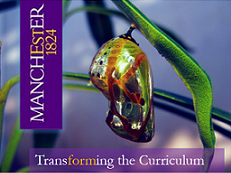Why education plays an important role in the sustainable development of energy resources?
“The Limits to Growth” is a book that has profound enlightenment for me. The author put forward the viewpoint of the earth limits and the limits of social development, and warned of the development model that humans continue to pursue economic growth, the theoretical results were also empirically studied (Meadows, 1972).
After reading this book, I had a deeper understanding of the sustainable development of energy and thought about what I could do as a physics teacher in middle school. I think the primary task is to strengthen students’ awareness on energy in the teaching process of related courses. The teaching goal of physics in middle school is to help students set up better energy values, energy ethics, etc.
This is also the unique role of physics compared to other basic subjects. We should guide students to pay more attention to the situation of local energy utilization, evaluate the trend of energy development correctly, and reduce the waste of energy in production and consumption around us. At the same time, we want to make students aware of the global nature of energy and notice that strengthening international cooperation has a positive impact on the sustainable development of society.

According to the authors, there is a limit to growth, which is mainly due to the limited nature of the earth. They found that the population and the economy developed in an exponential manner and belonged to an unrestricted system, while the food, resources and environment on which the population and the economy depended were developed in an arithmetic manner and belonged to a limited system.
In this way, population explosions and economic uncontrollability will inevitably cause and exacerbate problems such as food shortages, depletion of resources, and environmental pollution, which will further limit population and economic development in turn. On the basis of previous development models, as long as the positive feedback of population growth and economic growth continues to generate more people and higher per capita resource demand, this system will be pushed to its limit of exhausting the non-renewable resources on the earth (Meadows, 1972).

One of the most important points highlighted in the book is sustainable development. The theory of sustainable development is used to measure the overall national strength, the overall national strength competition is unified within the macro framework of sustainable development so as to adapt to the needs of coordinated development of society, economy, and nature. Therefore, the governments should comprehensively recognize the overall national strength in terms of concepts, roles, and evaluation criteria.
The value criterion of comprehensive national power is the process by which the country promotes the continuous improvement of comprehensive national strength including social and ecological benefits and the realization of sustainable development of the country on the basis of maintaining the sustainability of its ecosystem. Obviously, the connotation of comprehensive national power determines that in the process of enhancing the comprehensive national strength of sustainable development, scientific and technological innovation is the key means, the sustainability of the ecosystem is the basis, the healthy development of the economic system is the condition, and the continuous progress of the social system is the guarantee (Meadows, 1972).
After the reform and opening up, China has always regarded developing economy as the first task, the consumption of resources and the destruction of the environment during the development process are staggering. According to statistics, the demand gap of oil will exceed 6 billion tons and natural gas will exceed 2 trillion cubic meters in China in the next 20 years. In the next few decades, China will become the largest consumer of resources in the world, severe resource bottlenecks may bring the economy development to the limit in China. The Chinese government should face up to the crisis of resources and build dialogues with other countries on this basis, instead of sustaining economic growth and resulting in a loss of strategic mistakes. The Chinese government should pay more attention to sustainable development and make rational use of existing resources (Yang, Zhou and Zhang, 2017) .
The increasingly prominent problems of contemporary resources and ecological environment are grave challenges to the global human population. These problems not only raise higher goals for science and technology, economy, and social development, but also make comprehensive national strength research more difficult than ever, which is concerned increasingly by people.
Under the current circumstances, any country that wants to enhance its overall national strength cannot avoid the coordination and integration between science and technology, economy, resources, ecological environment and society. Therefore, it is particularly urgent and important to examine the functional behaviors and mutual adaptation mechanisms of these elements in the overall national power system in detail, and then to provide theoretical support for the country to formulate and implement sustainable development strategic decisions.
Education is the foundation of a country, which can guide people to the correct orientation of the sustainable development values. The effective integration of sustainable development concepts into physical classroom teaching is conducive to the harmonious coexistence of society and nature. Teachers should try to integrate physics learning with life so that students can experience the positive meaning of sustainable development, which allow students to feel a sense of accomplishment in learning physical knowledge. In addition, teachers can use lectures, experiments, and teaching activities to help students understand the importance of sustainable development for energy.
References:
Jennings, P. and Lund, C. (2001). Renewable energy education for sustainable development. Renewable Energy, 22(1-3), pp.113-118.
Meadows, D. (1972). The Limits to growth. New York: Universe Books.
Ren, J. (2018). Sustainability prioritization of energy storage technologies for promoting the development of renewable energy: A novel intuitionistic fuzzy combinative distance-based assessment approach. Renewable Energy, 121, pp.666-676.
Vitale, G. (2016). Renewable energies – Future perspectives. Renewable Energy and Environmental Sustainability, 1, p.17.
Yang, L., Zhou, P. and Zhang, N. (2017). A Review of Low-Carbon Transformation and Energy Innovation Issues in China. Sustainability, 9(7), p.1238.

